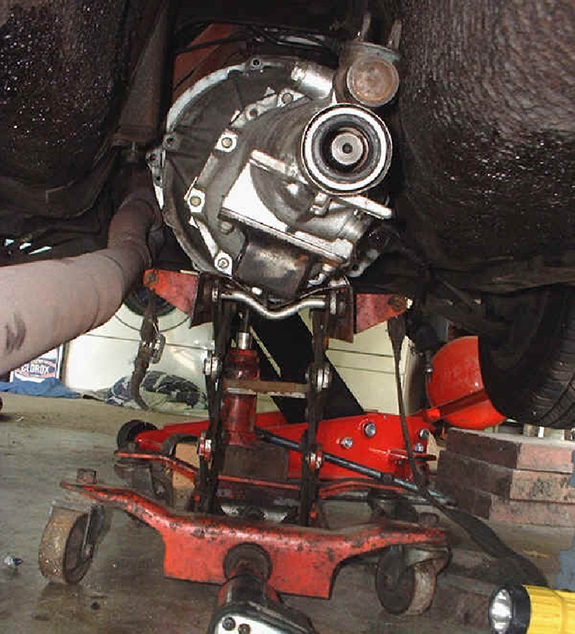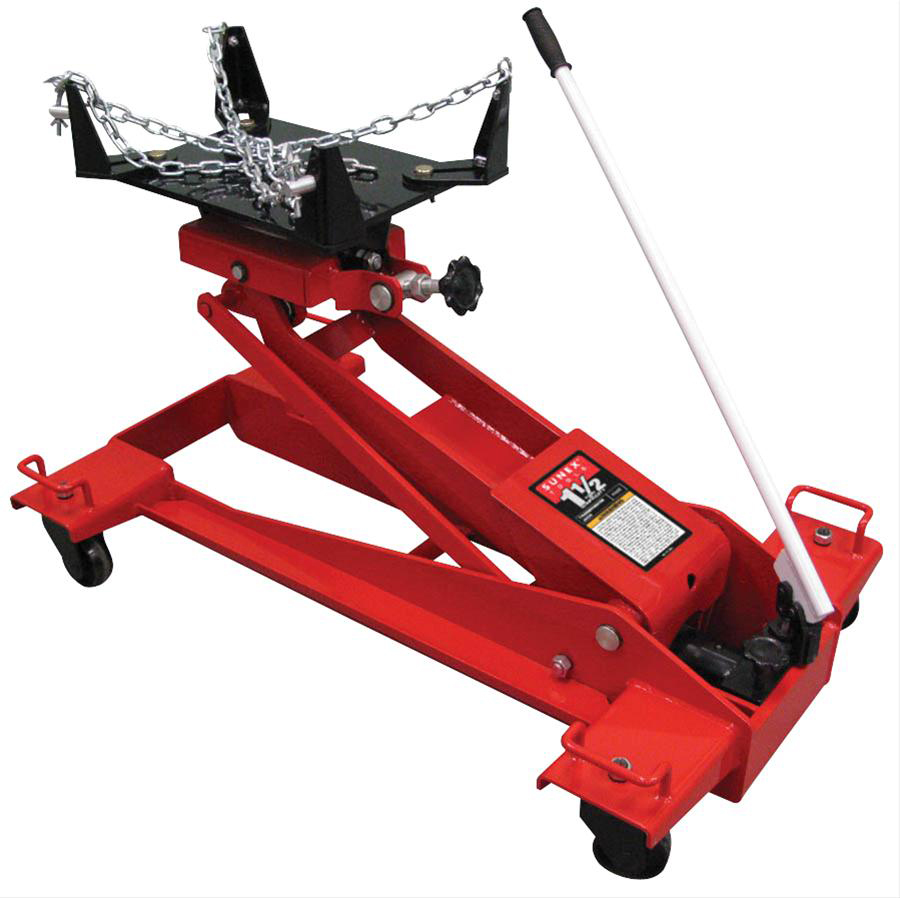
A transmission jack is a must-have tool if you’re removing or installing a transmission.
Now, while a lot of gearheads have made-do with improvised solutions for hoisting/moving a transmission, the fact is, a good transmission jack isn’t that expensive—and the consequences for a failed homebrew setup can be disastrous for both you and your transmission.
And don’t even think about wrestling a transmission into place using nothing but your own arm strength. A GM TH350 automatic, for example, may weigh less than 150 pounds, but that can become quite a burden when you’re lying on concrete with a bulky transmission housing sitting on your palms. (Then, try to imagine keeping a torque converter in place while you locate the dowel pins and thread-up the bellhousing bolts.)
But it’s not just about safety. Transmissions must be cradled securely and lifted smoothly to ensure you don’t damage anything during the installation. The right jack can make the difference between an easy job and a weekend of stripped threads and colorful language.
Even though the transmission jack’s job is relatively straightforward, there are several factors to consider before adding one to your shopping cart.
We’ll highlight some of the fundamental characteristics and options to explore when selecting a transmission jack.
What Type of Transmission Jack Do You Need?
There are essentially two* different types of transmission jack styles out there, colloquially referred to as either floor/low-profile or high-lift.
The choice you have to make is simple: do you have a vehicle lift? Or are you working with jack stands? A vehicle lift will require a high-lift jack, while a floor/low-profile jack is intended for a home mechanic relying on jack stands.
*There is a third option and it’s a good one if you’ve already got a quality floor jack with an adaptable jack flange. A lot of companies make transmission jack adapters to convert your standard floor jack to a transmission jack. Not all jacks are able to do this, so make sure to check jack and adapter compatibility before you make your purchase.

Height and Weight is a Factor.
It may seem obvious, but double-check the weight of your transmission with your prospective jack’s weight rating. You’d be surprised how wide the range between transmission weights is. Light car transmissions can start around 100 pounds, but heavy-duty truck transmissions can be three or four times that—especially if there’s a 4×4 transfer case attached.
Also, and this is particularly important for low-profile jacks, make sure you check the height the jack arm(s) will raise/lower your transmission. A good idea is to put your vehicle on the jack stands you intend to use for your project, and then grab a tape measure to see how much distance you’ll need to raise the jack to get it to reach the base of the transmission.
Other Things to Consider when Swapping a Transmission.
As mentioned before, in most cases, if you’re doing this in your home garage without a vehicle lift, you’re going to be using jack stands and a jack. (Lifted 4x4s may have enough clearance without requiring jack stands.) Make sure you follow proper safety precautions as you would any time you’re sliding underneath a 2,000+ pound object.
…

I just went through this a few weeks ago. I have a transmission jack like the red one at top of this page. The transmission is in a 2005 Chevy TrailBlazer 5.3L LS based engine with a 4L60E tranny. After I rebuilt the tranny and was putting it back in and my jack broke. With money being tight the next best thing I had was a semi truck tranny jack to use and worked like a dream. So yes having the right tranny jack is a must. The red scissor tranny jack has done several hundred tranny jobs over the past 15 to 20 years.